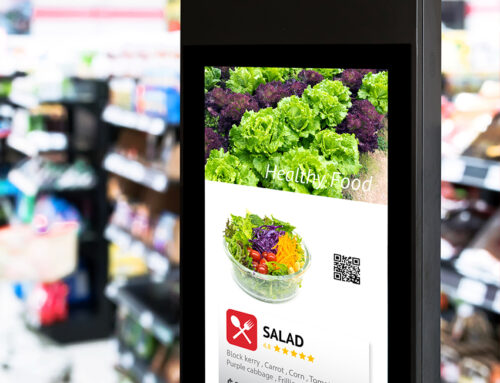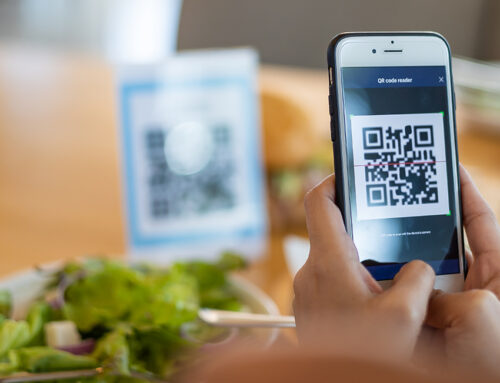Informative and Persuasive Advertising
When a business or brand launches a new product, the most significant initial goal is to pull in potential customers to trial or demo the product. Different brands will use different forms of advertising and marketing to do so. Gourmet Ads has run millions of food advertising creatives for thousands of food brands worldwide since 2008. We decided to highlight a few recent Food Advertisement Examples to demonstrate the types of advertising we see in Gourmet Ads. One popular way to advertise is through persuasive advertising, which focuses on crafting a compelling ad’s message to engage the audience.
But what exactly is persuasive advertising, and when is it ideal to use? Let’s take a look.
What is Persuasive Advertising?
Persuasive advertising is a form of product promotion that seeks to persuade a potential customer to purchase a specific product, usually when presented with several different similar products in the same product category. Persuasive advertising not only seeks to encourage a trial purchase but also seeks to coax potential consumers into adding the brand to their “consideration set” or customer loyalty. Both persuasive and informative advertising share the same goal of convincing the audience to take a desired action, albeit through different means.
Marketing professionals will use this type of advertising to generate demand for their new items or services, as well as to increase the demand for their product or service in that preexisting marketing.
Persuasive Techniques in Advertising
One common form of persuasive advertising is the comparative approach, which is a creative method to demonstrate a brand’s authority over others. Creative methods are designed to instantly attract people’s attention and engage them emotionally. This approach involves a brand demonstrating its authority over other brands in the same product category. In other circumstances, persuasive advertising can be used to convince a group of potential customers about the qualities of a product, usually through ads that thoroughly explain and demonstrate the effectiveness of the product. Testimonials are another popular form of persuasive advertising, from both experts and influencers. Celebrity endorsements are often used to create the most persuasive ads, leveraging the influence of public figures to enhance campaign effectiveness.
Informative and Persuasive Advertising
Informative and persuasive advertising are two distinct approaches that businesses use to convey the strengths of their products or services. Informative advertising focuses on highlighting a product’s features and benefits, providing consumers with the factual information they need to make informed decisions. This type of advertising relies on clear, straightforward communication of facts and figures to trigger a desired action from the audience.
On the other hand, persuasive advertising appeals to consumer emotions to close the sale. It uses emotive, value-oriented ideas to create a connection with the audience, often aiming to evoke an emotional response that drives the consumer to choose a specific product or service. While informative advertising aims to drive “primary demand” for new product and service categories, persuasive advertising seeks to drive selective demand for specific products or services within those categories.
The choice between informative and persuasive advertising depends on a company’s overall advertising strategy. Informative advertising is typically used to introduce new products and services into existing categories, relying on the strength of the product’s features to encourage purchases. Persuasive advertising, however, uses creative methods to instantly attract people’s attention and appeal to their emotions, making it a powerful tool for building brand preference and loyalty.
Persuasive Advertising Examples
Here are a few examples of persuasive ad copy in action:
“XYZ Pharmaceuticals understands the need for effective and safe medication for a lower price. In an age where having health insurance can be difficult, we’re dedicated to providing our customers with a wide range of medication for a low price, from insulin to decongestant to asthma medication. Just take a look at how our generic versions of medicine compare to big brands. That’s an almost 200% markup. Why pay so much for medication when you can save big with XYZ Pharmaceuticals?”
“Get an XYZ Auto insurance quote today and start saving immediately. Buy online and enjoy insurance bundles, home insurance coverage, condo insurance coverage, and even renter’s insurance. We make getting coverage easy– just look at these screenshots of our app. Three clicks and you’ve successfully applied! When has applying for health insurance ever been so simple? Now you can spend more time doing the things you love– not dealing with complex paperwork.”
“XYZ Burgers’ 100% turkey patties have 40% less fat, 30% fewer calories, and all the great taste of your favorite beef burgers. You don’t have to sacrifice your health for great flavor. XYZ Burgers uses an ultra-secret formula to pump our patties full of flavor without adding any trans fat, cholesterol, or other not-so-great things to our meat. Our turkey burgers come from farm-raised, grain-fed, and free-range turkeys.”
As you can see, persuasive advertising is very simple and involves being able to effectively communicate the value of your product to your customer.
Industry-Specific Applications
Persuasive advertising is a versatile tool that can be applied across various industries, each with its unique goals and techniques. In the retail industry, persuasive advertising is often used to promote new products, create a sense of urgency, and drive sales. For example, a retail ad might highlight a limited-time offer or showcase customer testimonials to persuade people to make a purchase.
In the finance industry, persuasive advertising can be used to promote investment opportunities, build trust, and encourage people to take action. Ads in this sector might focus on the security and potential returns of an investment, using expert endorsements or success stories to persuade potential investors.
The healthcare industry also benefits from persuasive advertising, which can promote new treatments, create a sense of hope, and encourage people to seek medical attention. Healthcare ads often use emotional appeals, such as patient testimonials or stories of recovery, to connect with the audience on a personal level.
In the technology industry, persuasive advertising is used to promote new products, create excitement, and encourage people to adopt new technologies. Tech ads might highlight innovative features, showcase user experiences, or use futuristic imagery to persuade consumers to embrace the latest advancements.
Measuring and Optimizing Persuasive Ads
Measuring and optimizing persuasive ads is crucial to ensure their effectiveness and maximize their impact. Advertisers can use various metrics, such as click-through rates, conversion rates, and return on investment (ROI), to gauge the performance of their ads. These metrics provide valuable insights into how well the ads are resonating with the target audience and driving the desired actions.
A/B testing is another powerful tool for optimizing persuasive ads. By comparing the performance of different ad creatives, advertisers can identify which elements are most effective and make data-driven decisions to enhance their campaigns. This iterative process helps refine the ad’s message and improve its overall effectiveness.
Additionally, data analytics can offer deeper insights into the behavior, preferences, and interests of the target audience. By understanding what drives their audience, advertisers can create more targeted and effective persuasive ads that resonate on a personal level.
Continuous measurement and optimization of persuasive ads not only improve their performance but also help advertisers stay ahead of the competition. By leveraging data and insights, advertisers can craft compelling messages that drive more conversions and sales, ultimately achieving their marketing goals.











